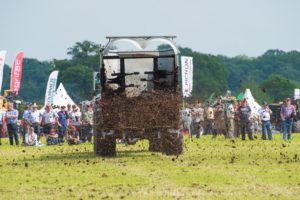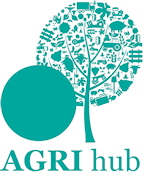 Improving grass yields and quality requires attention to detail at every step of the process, and visitors to the Grassland & Muck Event were treated to the full range of equipment and advice.
Improving grass yields and quality requires attention to detail at every step of the process, and visitors to the Grassland & Muck Event were treated to the full range of equipment and advice.
AHDB launched the new farmer-friendly RB209 nutrient guide at the event, which promises to make it much easier for farmers to boost yields with straightforward nutritional advice.
“For me, the new RB209 is light years ahead of what we had before,” said beef farmer Paul Westaway, who chaired the working group that developed the guide. “The biggest driver of profit on our farm is soil management – it’s really key for us. The old RB209 was great for serious agronomists as a reference document but it was a bit terrifying for farmers so was under-used on farm.”
The new version is split into seven sections including grass and forage crops, arable crops, principles of nutrient management, and organic materials. Book values have been updated to reflect latest farm practices, with a new emphasis on soil and manure sampling. Digestate is included for the first time, while the grass section includes concise nitrogen information to meet target yields for grazing and ensiling.
As well as free hard copy formats, farmers can access RB209 online and download the app to their phone, enabling them to make quick nutrient decisions when out on farm. “Anyone who is vaguely interested in nutrients can pick this up and use it,” said Mr Westaway. “It’s kept all the great bits of the old RB209 but is incredibly useful for farmers, too. It’s a big step forward.”
In the muck area, John Deere gave the first public demonstration of its new Manure Sensing system, which analyses the nutrient content of slurry while it’s being applied. “It’s revolutionary technology,” said Ross Skinner, product sales specialist. The infrared sensor takes 4000 measurements a second, and adjusts flow speed accordingly to deliver targeted application rates. When linked to a John Deere tractor the system automatically adjusts the speed of travel to maximise efficiencies.
The same sensor can also be used on forage harvesters to analyse fresh forage, or be moved into the barn over the winter to analyse silage straight from the clamp face. The MyJohnDeere app enables farmers to overlap yield mapping from the forage harvester with the manure sensor to deliver highly accurate nutrient supplies.
Taking little steps forward across the full range of grassland management could add up to significant gains, according to Yara’s Jon Telfer. Speaking in the forum theatre, he explained how focusing on marginal improvements to soil condition, pH, nutrients, slurry management and animal health could add considerably to the bottom line.
“If you’re going to produce more forage soil assessment has to be the starting point,” he said. Biological and chemical processes were key to releasing nitrate, phosphate and potash from the soil, all of which worked best at a pH of seven. “At pH7 nutrient release efficiency for N, P and K is 100% – at pH5 it is 53%, 34% and 52%, respectively. We see plenty of soil samples through the lab, and more than half are below 6pH – that can make your fertiliser look very expensive.”
Around 40% of soils had a P and K index of 0-1, dramatically limiting grass productivity, warned Mr Telfer. “You need to analyse your soils and slurries and calculate the nutrient balance on a field by field basis.” It was also important to remember to apply Sulphur, which was vital to the protein content and digestibility of the forage, he added. “There are many mineral deficiencies linked to disorders in livestock so consider key nutrients and their impact on animal health.”
Having produced the best quality grass possible, it was important to ensile it correctly to preserve those nutrients and digestibility, said Francis Auchinloss from Bock UK. “A lot of clamps aren’t fit for purpose – they are too wide and sometimes overfilled.” Ideally clamps should be narrow so the silage face moves back at a rate of 2m a week, to avoid aerobic spoilage.
“In Europe a lot of farmers have sloping walls against an earth bank, which improves compaction across the breadth of the clamp, and is safer to work on,” said Mr Auchinloss. However, where farmers could not replace or renew older clamps it was important to seal the walls every three years and check the floor for erosion. “The best quality silage needs the best compaction and sheeting to prevent expensive spoilage and waste.”
- For more information visit www.grasslandevent.co.uk



